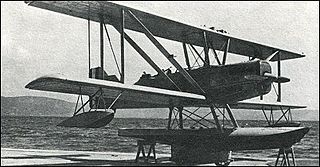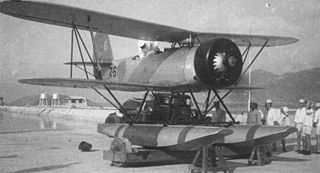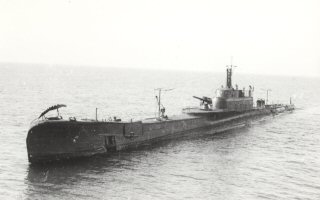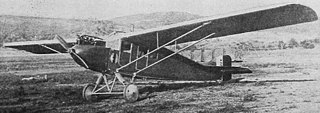
Blackburn Aircraft Limited was a British aircraft manufacturer from 1914 to 1963 that concentrated mainly on naval and maritime aircraft.

Piaggio Aerospace, formerly Piaggio Aero Industries, is a multinational aerospace manufacturing company headquartered in Villanova d'Albenga, Italy. The company designs, develops, manufactures and maintains aircraft, aero-engines, aerospace components and aerostructures.

HMS Hermes was a British aircraft carrier built for the Royal Navy and was the world's first ship to be designed as an aircraft carrier, although the Imperial Japanese Navy's Hōshō was the first to be launched and commissioned. The ship's construction began during the First World War, but she was not completed until after the end of the war, having been delayed by multiple changes in her design after she was laid down. After she was launched, the Armstrong Whitworth shipyard which built her closed, and her fitting out was suspended. Most of the changes made were to optimise her design, in light of the results of experiments with operational carriers.

Aquila was an Italian aircraft carrier converted from the trans-Atlantic passenger liner SS Roma. During World War II, Work on Aquila began in late 1941 at the Ansaldo shipyard in Genoa and continued for the next two years. With the signing of the Italian armistice on 8 September 1943, however, all work was halted and the vessel remained unfinished. Aquila was eventually scrapped in 1952.

A submarine aircraft carrier is a submarine equipped with aircraft for observation or attack missions. These submarines saw their most extensive use during World War II, although their operational significance remained rather small. The most famous of them were the Japanese I-400-class submarines and the French submarine Surcouf, although small numbers of similar craft were built for other nations' navies as well.

The Yokosuka E14Y was an Imperial Japanese Navy reconnaissance seaplane transported aboard and launched from Japanese submarine aircraft carriers such as the I-25 during World War II. The Japanese Navy designation was "Type 0 Small Reconnaissance Seaplane" (零式小型水上偵察機).

The IMAM Ro.43 was an Italian reconnaissance single float seaplane, serving in the Regia Marina between 1935 and 1943.

The Caproni Ca.135 was an Italian medium bomber designed in Bergamo in Italy by Cesare Pallavicino. It flew for the first time in 1935, and entered service with the Peruvian Air Force in 1937, and with the Regia Aeronautica in January 1938.

The Piaggio P.6 was an Italian catapult-launched reconnaissance floatplane designed and built by Piaggio for the Regia Marina.

The Lohner L was a reconnaissance flying boat produced in Austria-Hungary during World War I. It was a two-bay biplane of typical configuration for the flying boats of the day, with its pusher engine mounted on struts in the interplane gap. The pilot and observer sat side by side in an open cockpit, and both the upper and lower sets of wings featured sweepback.

The Watanabe E9W was a Japanese submarine-borne reconnaissance seaplane, the first aircraft designed by Watanabe Ironworks.

Ettore Fieramosca was an Italian submarine which served with the Regia Marina in World War II. She was named after Ettore Fieramosca, an Italian condottiero of the 16th century.

The Macchi M.53 was an Italian reconnaissance floatplane designed and built in the late 1920s by Macchi for the Regia Marina.

The Macchi M.70, was an Italian light biplane of the late 1920s built by Macchi.

The Piaggio P.9 was an Italian single-engined strut-braced high-wing cabin monoplane, designed and built by Piaggio as a tourer for the civil market. The wood-built two-seat P.9 was first flown in 1929, powered by a 75 hp (56 kW) Blackburn Cirrus II piston engine.

Ettore Fieramosca was a protected cruiser of the Italian Regia Marina built in the 1880s. She was the fourth and final member of the Etna class, which included three sister ships of slightly smaller dimensions. Named for the condottiero of the same name, she was the only member of her class not named for a volcano. The ship was laid down in December 1885, launched in August 1888, and was commissioned in November 1889. She was armed with a main battery of two 254 mm (10 in) and a secondary battery of six 152 mm (6 in) guns, and could steam at a speed of around 17 knots.

Europa was a seaplane carrier of the Italian Regia Marina. Originally laid down as the merchant ship Manila, she was renamed Salacia in 1898, and then sold to German and then Italian shipping companies in 1911 and 1913, respectively. She became Quarto in 1913, and in February 1915 she was purchased by the Italian fleet, renamed Europa, and converted into a seaplane carrier with a capacity of eight seaplanes. She served as a seaplane base in Valona during World War I and supported the Allied response during the Battle of the Strait of Otranto in 1917. She was quickly sold for scrap in 1920 after the war ended.
The Yokosuka E6Y was a Japanese submarine-based reconnaissance seaplane developed at the Yokosuka Naval Air Technical Arsenal for the Imperial Japanese Navy during the 1920s. The prototype first flew as the Yokosho 2-Go in 1929.

The CANT Z.516 was a three engine monoplane floatplane designed in Italy at the start of World War II. It did not go into service.
The CANT Z.504 was a prototype reconnaissance biplane flying boat made by CANT in the 1930s.


















